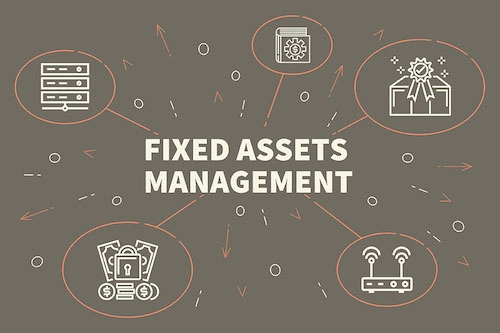Do You Know Where Your Assets Are?

Sage Fixed Assets
Industry experts predict that 65% of fixed asset data is incomplete, inaccurate or altogether missing, while 10-30% of fixed assets are no longer owned, but still on the books. A company need only lose track of a small number of its fixed assets to significantly overpay taxes, a burden that is compounded by replacement costs for assets that may be lost or stolen. The risks and costs associated are significant, so it makes good fiscal sense to track your organization’s assets carefully and throughout their lifecycle.
Sage Fixed Assets is an excellent solution available for Sage 100c, Sage 500, and Sage Intacct users to keep accurate track of valuable company property. It’s actually a three-part solution, starting with Planning, and moving through to Depreciation and Tracking.
Planning
Sage Fixed Assets – Planning helps you take control of your fixed assets before they even become fixed assets, with flexible management of capital budgeting and construction-in-progress projects. It allows you to set up projects and budgets and begin planning for the assets required. Each project can have any number of “planned assets” each with their own budget and each can be designated as capitalized or expensed. Throughout the project, invoices can be assigned to a planned asset, along with other types of costs, the sum of which will ultimately become total acquisition spend for the asset. Sage Fixed Assets – Planning would be ideal for manufacturing companies planning on a warehouse or shop floor expansion, for example.
When the assets are ready for use, they can be transferred easily into Sage Fixed Assets – Depreciation.
Depreciation
The Sage Fixed Assets – Depreciation module is the most popular component in the solution. Every company will benefit from the power, ease and accuracy of this tool. Sage Fixed Assets – Depreciation helps you calculate and track the most profitable/valuable depreciation available in order to maximize your tax deduction benefits.
It gives you the flexibility to manage the entire fixed-asset life cycle—from acquisition to transfers and disposals. With more than 50 depreciation methods including a user-defined option. It comes with more than 30 reports, including year-end financial statements, approved U.S. IRS and Canadian T2 Corporation tax forms and worksheets. Sage Fixed Assets—Depreciation also includes the ability to allocate cost and depreciation for an individual asset or group of assets to more than one funding source and the ability to create budgetary books for asset budgeting projections.
Tracking
Remember our opening statistic that a large percentage of typical companies’ fixed assets are lost or stolen? The Sage Fixed Asset – Tracking module has a mission to address that statistic. It’s the hands-on tool that allows you to capture asset information at its source using mobile barcode readers, and then reconcile that data to ensure every asset is fully accounted for.
Easy-to-use wizards in the software walk you through every step of the inventory tracking process. Mobile barcode readers help you conduct multiple inventories concurrently at multiple sites and reconcile all the data from one central location. You can use the more than 40 customizable fields to control data entry and add notes and images to clearly describe each asset record and fit your organization’s workflow.
With automated inventory functionality and built-in reconciliation capabilities, Sage Fixed Assets—Tracking makes keeping track of the items you use to run your organization a whole lot easier.
Integration with Sage 100c and Sage 500
The Planning, Depreciation and Tracking components are seamlessly integrated, so your information is in a single database—eliminating duplicate data entry and ensuring all departments are working with the most current and accurate data.
In addition to integration across the solution’s components, Sage Fixed Assets integrates with Sage 100c and Sage 500. New assets can be created from both the Accounts Payable and Purchase Order modules—all the information needed to create an asset is available from those entry points. Plus, Sage 100c and Sage 500 pull General Ledger report data from Sage Fixed Assets to provide a cohesive, complete picture of your organization’s assets.
We invite you take a much closer look at Sage Fixed Assets by viewing this recorded webinar. In addition, Sage has a Fixed Asset Tracking ROI Calculator that will be helpful in calculating the specific benefits to your company. Of course, you can also contact one of our Sage Fixed Assets with any of your questions.




